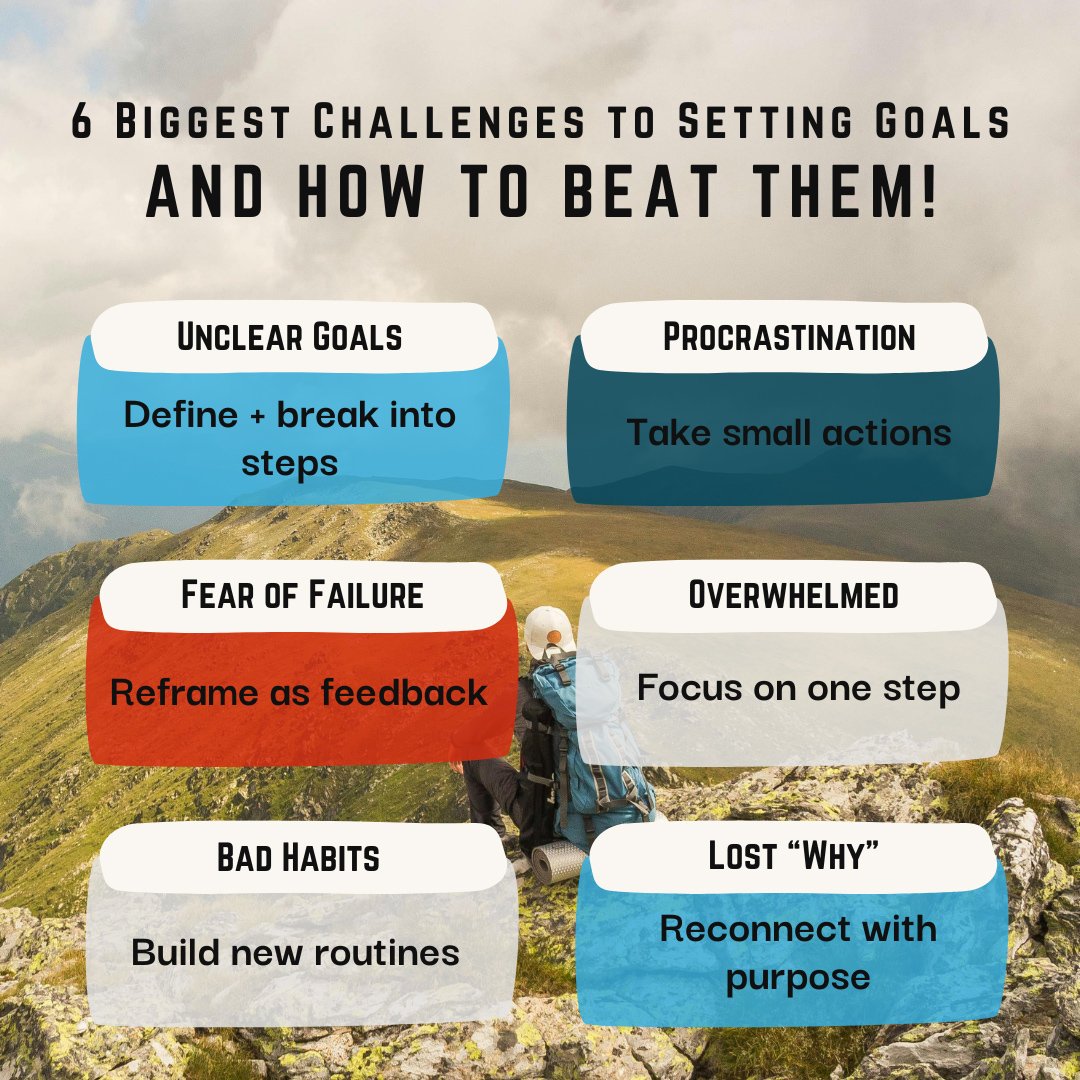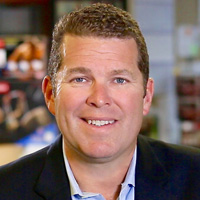“Sir, you gotta be kiddin’ right?” my lead machine gunner of SEAL Team TWO's Hotel Platoon asked. I had requested that my platoon fill out 2 personal and 2 professional goals for each of the 5-year, 3-year, and 1-year periods. The request met with resistance as if it were like going through Hell Week all over again—even though it took up an entire weekend! It wasn't easy for them to consider their goals. I could understand why: in the military, there is rarely an opportunity to think about what one wants for oneself. Prioritizing oneself can feel selfish when serving in SEAL Team, yet goal-setting is still essential to success. Those conversations remain etched into my memory; especially those where they dared to dream big. With every audacious ambition they voiced, I wanted, even more, to help them succeed.
Making goals and sticking to them can be a daunting task for many. Resistance appears at every stage, from the beginning of formulating the goal to following through with the action plans. This resistance can manifest in both internal thoughts—telling yourself that you're not capable or it's too hard—or external obstacles like people or situations that work against your dreams. It's no surprise then that less than 10% of Americans who make New Year's resolutions feel successful by the end of the year. Achieving goals is a difficult journey, and thus requires a great deal of determination, strength of will, and commitment to reach success. Without courage, focus, and persistence, one's ambitions may slip away before the pursuit has even begun!

Challenges to Setting Goals and Taking Action
We all have dreams and aspirations, but it can be hard to know where to start. Setting goals is the first step in turning the invisible into the visible, but taking action can be daunting. Here are five of the biggest challenges to setting goals and taking action daily, plus tips on how to overcome them.
Challenge 1: Unclear Goals
Unclear objectives or goals can lead to aimless drifting instead of making meaningful strides in the right direction. To ensure that this doesn't happen, it is important to define your goals clearly, break them down into smaller achievable targets, and map out a timeline with actionable steps. Being mindful of these objectives and adjusting them as circumstances change will help you stay focused on the goal at hand and fend off any potential distractions that could impede your progress. Additionally, creating and sticking to a daily/weekly plan with priority tasks can be extremely beneficial in staying motivated and organized while working towards achieving your goals.
Challenge 2: Procrastination
Sometimes we wait until we feel ready before taking action, but this can lead us down a path of never actually starting anything. It's important to remember that you don't need to feel 100% ready before taking action—just start! Taking small steps each day will help build momentum and confidence as you move closer to achieving your goal. It's easy to get caught up in day-to-day life and push your goals off until "someday." This mentality can lead to procrastination and a lack of motivation. To overcome this challenge, set small achievable goals that will help you work towards your larger goal. Break down tasks into smaller chunks so that they don't seem overwhelming.
Challenge 3: Fear of Failure
Fear of failure is a common barrier when it comes to setting and tackling goals—it's natural to want perfect results while striving toward success. The best approach here is to take calculated risks—ones that carry sufficient reward without too much risk—and use any stumbling blocks as learning experiences. Making mistakes is part of the learning process—it doesn't mean you've failed! When mistakes arise, take some time out for self-reflection and use them as an opportunity for growth. Don't let mistakes stop you from reaching your goal, but instead use them as a stepping stone toward success.
Challenge 4: Minding the Mountain
It's easy to become overly fixated on the end goal when setting ambitious objectives. However, that should not be at the expense of forgetting about how we get there. Having big, audacious goals is undoubtedly a driving factor for progress—dreaming big helps to push our boundaries and can open up many opportunities. But if our minds are only focused on the mountain (the looming result), then it's far too easy to get overwhelmed by the difficulty of such a task. To deal with this potential obstacle, I emphasize the importance of “Managing the moment, NOT the mountain” —meaning that rather than worrying about reaching the peak all in one go, focus instead on taking small steps forward by managing each moment at a time. Breaking down difficult tasks into achievable sections or taking regular breaks can both help on this journey.
Challenge 5: Changing Habits
Humans can often be creatures of habit, for better or worse. While habitual behavior can provide a reliable foundation for progress and success, it can also create an inertia that prevents us from trying new approaches or even getting started with our goals. Therefore, understanding and managing our habits is key to unlocking true potential. When setting objectives, it's easy to become stuck in a creative rut or lack motivation when coming up with inventive solutions. To overcome this challenge, try brainstorming fresh ideas by yourself or talking with others who may have different perspectives or experiences than you do. This will help open up a range of new possibilities and sharpen your thinking while providing inspiring ideas on how to tackle potential obstacles along the way. Allow yourself time and space to reflect on these options before making any decisions.
Challenge 6: Forgetting Your "Why"
Understanding your "why" —the deeper reason why you set a goal—is essential to success. It's not enough to just have an intellectual understanding of the purpose. Tapping into your true motivation requires engaging all of your senses and aligning your head, heart, and gut in harmony. Having all three intelligence centers—your thoughts, emotions, and desires—working together in synergy is critical for achieving any goal. There will undoubtedly be moments when it gets tough, but having strategies in place beforehand can help you stay driven and focused on the bigger picture. Anticipate these difficult times and create an action plan that can see you through them with grace, determination, and enthusiasm.
Creating a Goal Team is Essential to Achieving Your Goals
Harvard University Professor Steven Kraus and Dominican University's Dr. Gail Matthews conducted a study to understand why people fail to reach their goals. The study included five groups of 267 participants ranging in age from 23 to 72, and the results showed that commitment, accountability, and written goals are key elements in achieving success.
The research found that those who wrote down their goals were 42% more likely to achieve them than those who did not write down their goals. Additionally, the study revealed that having an accountability partner increased the likelihood of goal achievement by 78%. Lastly, the researchers found that when participants made a commitment to someone else about achieving their goal, they were 95% more likely to succeed.
GoalBud is Backed by Research to Ensure Success
GoalBud is structured around the most effective way to ensure success. With GoalBud, you can make goals, build a goal team, create goal commitments, and check in daily to stay on track. The GoalBud app is a free tool that I developed with John Keagy as part of my mission to help 100 million people accomplish more than they originally thought possible and Be Unstoppable.
It's easy to become overwhelmed when setting and working towards goals, so having GoalBud as a tool can be extremely helpful in keeping you on track. With the app, you can easily connect with your goal team for support and accountability, stay motivated, and measure your progress. GoalBud is the perfect companion to help you achieve success!
So, what are you waiting for? Download GoalBud and start reaching your goals today! You can do it—you just have to believe in yourself and take action. Make sure to set small achievable goals, break down tasks into smaller chunks, and celebrate your successes along the way!

